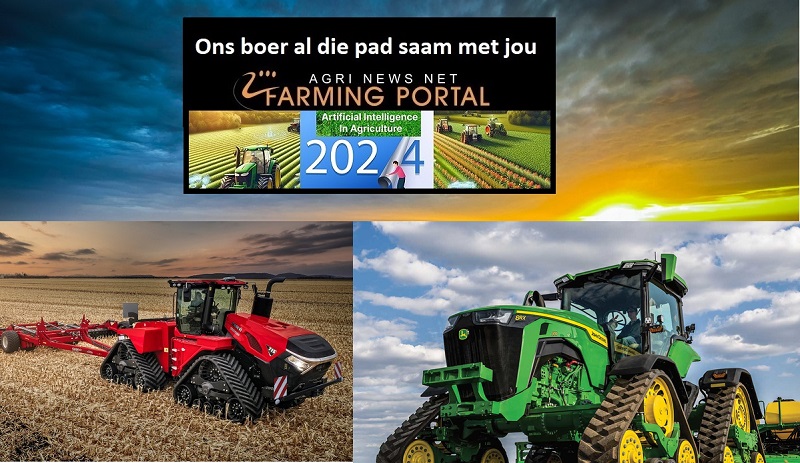Amid the growing climate crisis, embracing AI is crucial. Researchers are leveraging the technology to assist wineries in adapting to climate changes and improving day-to-day farming practices with its predictive capabilities. In many instances, winemakers are integrating AI to refine agricultural methods, boost efficiency and promote sustainability. Here’s a glimpse into the future of the wine industry, revealing what lies ahead as AI continues to shape its evolution in the vineyard.
Swift and ongoing development
David Carter is CEO and co-founder of Deep Planet, a groundbreaking agritech startup born from the vision of Oxford University scientists and engineers. The company, granted by the European Space Agency, aims to aid agriculture in adapting to climate change using advanced machine learning. Deep Planet’s technology supports growers, winemakers and sustainability teams in optimizing vineyard management, efficiency, disease control and overall sustainability.
One notable AI product from Deep Planet is VineSignal, which monitors regenerative agriculture, soil health and sustainability. VineSignal tracks soil and plant nutrients, soil organic carbon and water management, including irrigation leaks and evapotranspiration. It also improves harvest logistics and efficiency, enhances grape quality by pinpointing the best harvest times, and creates yield maps. Additionally, it detects diseases and risks to vine health, covering major pests and diseases and supporting regular vineyard surveys. Vine technology aids in achieving carbon-neutral certifications and enhances sustainability throughout supply chains.
Carter highlights the rapid advancement of AI in vineyards, noting that new applications and innovations are emerging frequently. He observes, “Wineries are increasingly adopting AI tools for vineyard management and winemaking processes.” Further stating, “AI is progressing beyond basic tasks, with developments in disease prediction, irrigation optimization and wine quality forecasting. As data accumulates, AI algorithms are becoming more accurate and reliable. The evolution of AI in viticulture is both swift and ongoing.”
Looking ahead, Carter envisions AI becoming mainstream in vineyards within the next decade, with satellites monitoring various vineyard aspects and autonomous machinery handling tasks such as harvesting. This shift will usher in a new era of viticulture driven by advanced AI technologies.
Put in practice
Dru Reschke, owner of Koonara Winery in the Coonawarra, South Australia, has embraced AI to enhance his vineyard practices, focusing on prevention rather than cure. As the only certified organic vineyard in the region, Reschke uses AI to analyze soil and leaf samples, identifying and replenishing missing minerals to maintain a healthy vineyard. This approach has allowed Koonara to average just two sprays per year over the past seven years (excluding one challenging vintage). Remarkably, the vineyard has not used herbicides or pesticides — organic or otherwise — for 18 years.
Reschke praises AI’s impact on his vineyard, saying, “It has helped massively.” He elaborates, “We continuously monitor 15 key data points, including nutrition and water stress, and forecast our future water needs.” He recounts a past mistake where reliance on sensors rather than AI software led to severe water stress and nearly ruined a vintage. “The risks of not using AI are far greater than embracing it,” Reschke notes.
Worth every penny
Deep Planet’s AI system has achieved notable results, analyzing more than 4 million soil samples and excelling in detecting soil carbon. A 1% increase in soil carbon can hold an additional 138,000 liters of water per hectare, potentially saving 41 billion liters annually across 100,000 hectares, a huge win for hot mediterranean climates such as South Australia, California and South Africa. This project could result in 33 million tons of CO2 sequestration, earning 33 million carbon credits (valued at USD $1 billion) over 25 years.
Reschke says that “AI integration has provided invaluable insights into vineyard health and management.” He envisions a future where AI could automatically analyze minerals and integrate this information into watering systems to maintain optimal nutrient levels and prevent pest and disease pressure. He is particularly excited about the potential for automatic drone analysis and spraying, noting that, “drones could provide more detailed insights into trace minerals than satellites.”
AI integration has brought significant benefits to the health of his vineyard. When asked about any potential downsides, he responded, “None,” before adding, “AI opens your eyes to what you might be missing in the vineyard and provides a straightforward management plan that lets anyone manage a changing vineyard professionally.”
Reschke finds the cost of this technology to be quite reasonable, with comprehensive data available for just USD $2 to $25 per hectare per year. The main hurdle, he notes, is overcoming resistance to change, as farmers continue to require solid proof of AI’s benefits to shift their practices.
Reschke believes that increased collaboration among farmers could amplify AI’s advantages, leading to cleaner, more efficient farming. He emphasizes that adopting AI is essential to staying ahead, as those who don’t make the switch risk falling behind. Embracing AI not only offers a path to improved vineyard management and better wine quality but also boosts profitability. As AI technology continues to evolve, viticulturists should welcome AI and its advancements, moving forward to stay at the forefront of the industry, being the next generation in intelligent viticulture.
Teri van Aalst is a wine professional and writer based in South Australia. Living in the McLaren Vale wine region and working at various cellar doors, including some of the most prestigious wineries in South Australia, she has completed all her WSET certifications. She then moved to the Netherlands for a couple of years, where her passion for wine journalism flourished. During her time in Amsterdam, she taught WSET courses and freelanced her expertise to wine bars and urban cellar doors, bringing a wealth of experience and technical knowledge. Now, back in Australia, with her own wine consultancy business, she helps wineries and explores current trends in the wine industry for publication, aiming to shape and evolve the global wine community.
















